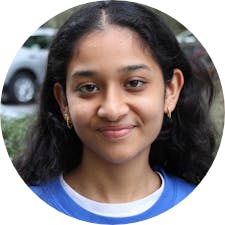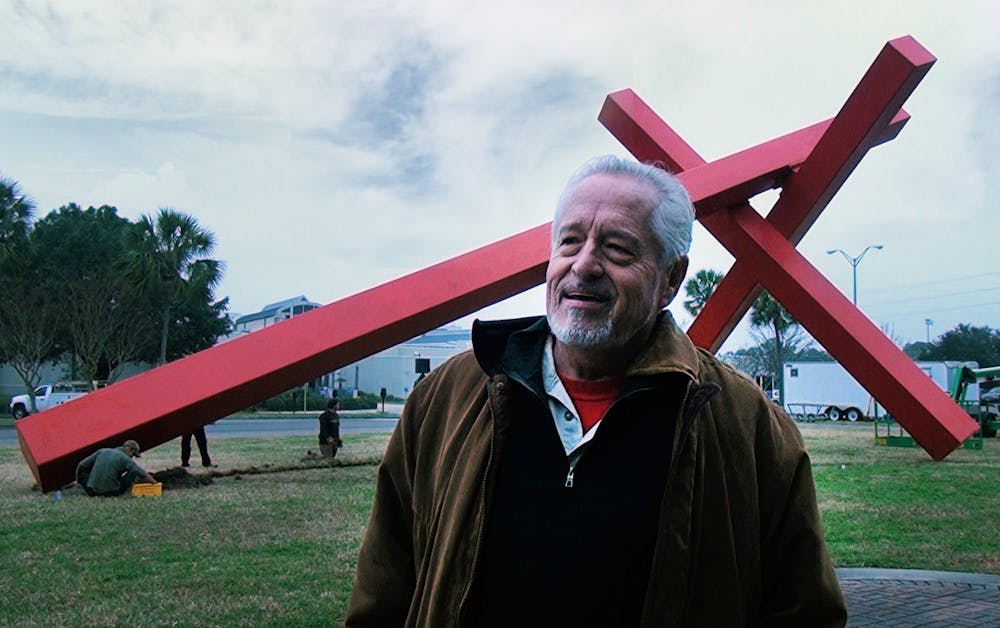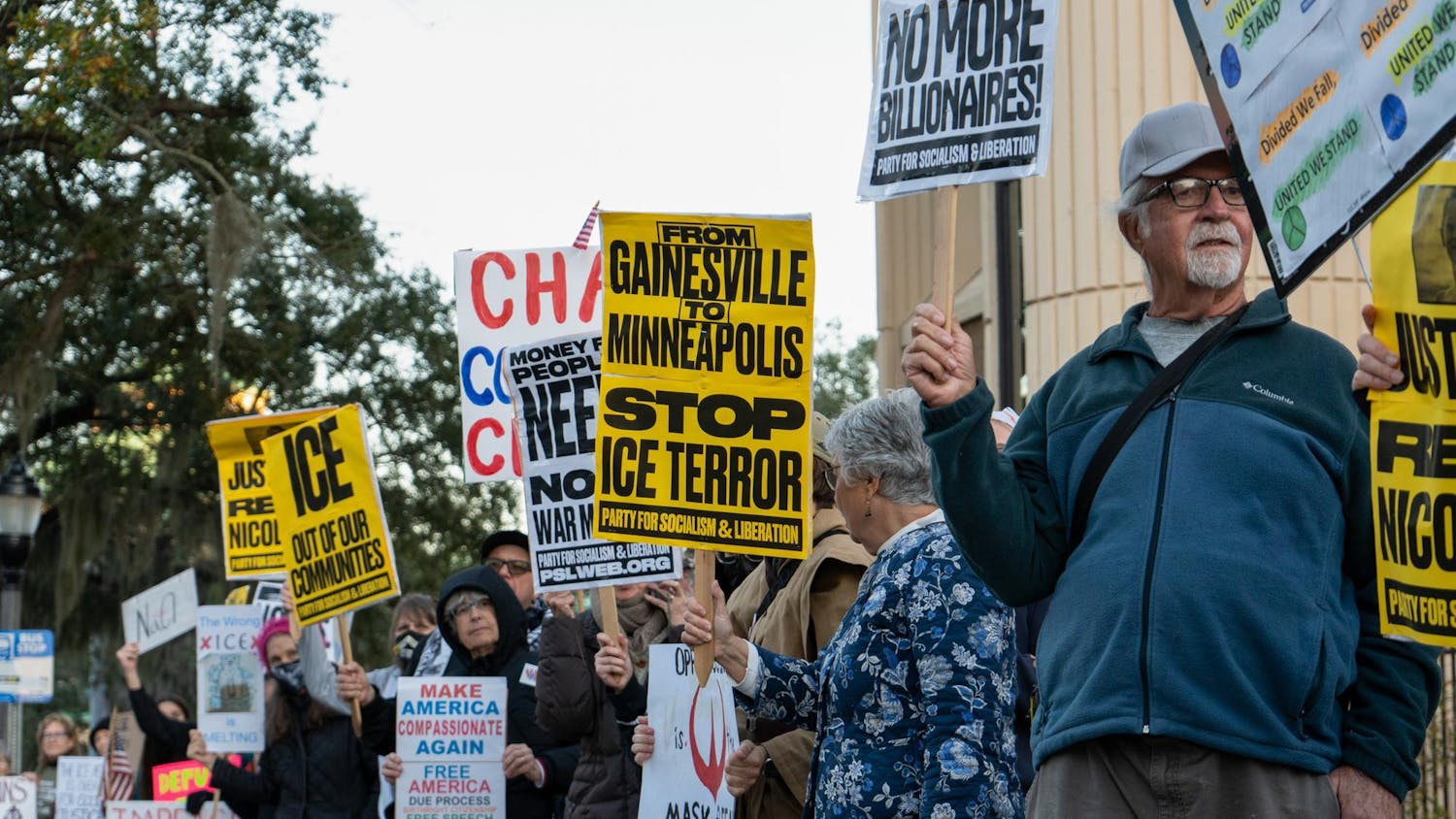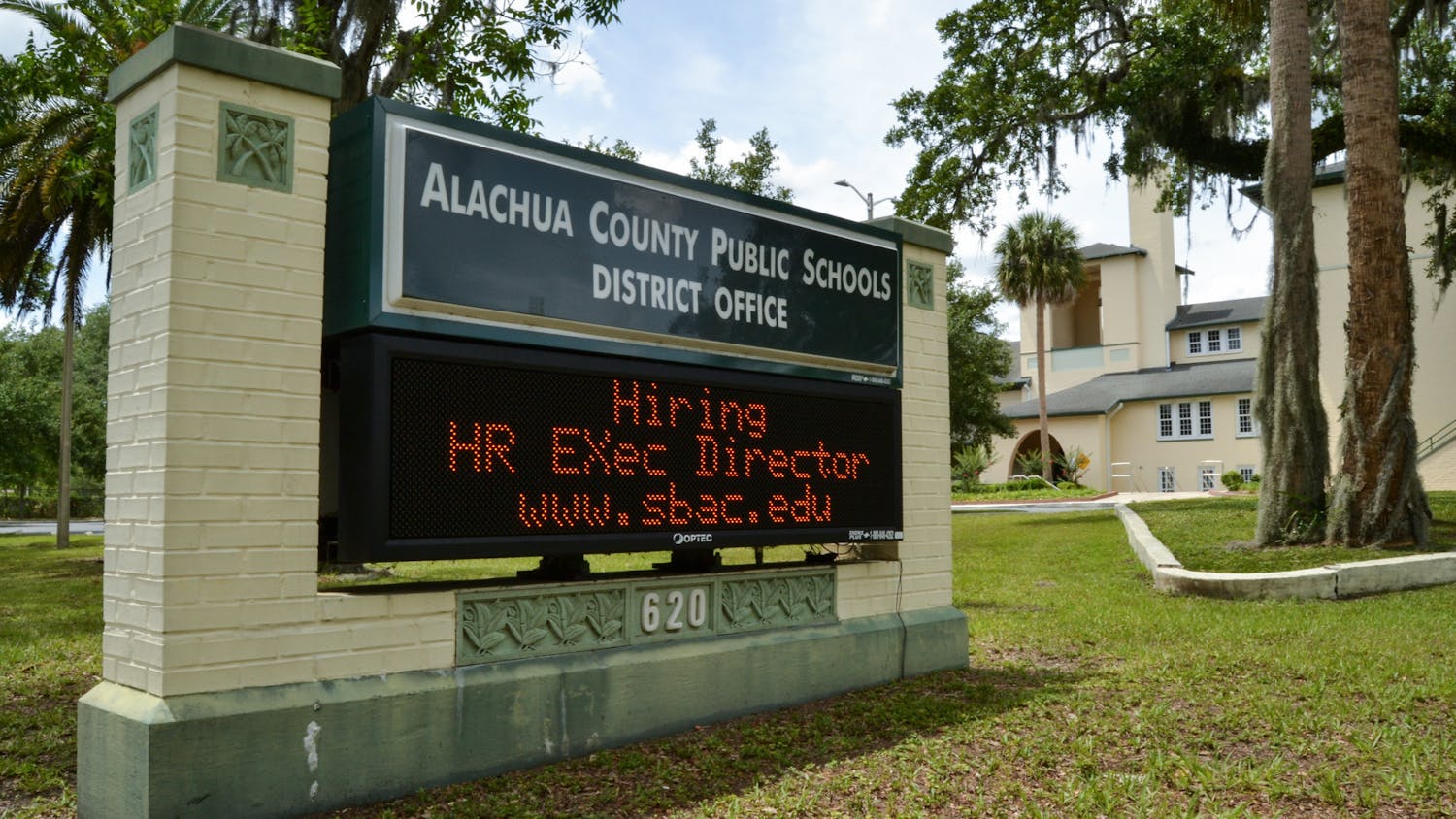Pamela Henry, then a stockbroker, didn’t know much about art until she met her future husband and sculptor John Raymond Henry in 1982. They got married two years later.
Henry flew his wife to countries like France and Italy, where he taught her everything she knows about the business of art today, Pamela Henry said.
“The gifts that he gave me were so numerous,” she said. “I have a million memories. I live the life of five women because he lived the life of five men.”
Pamela Henry, now an art dealer and the owner of John Henry Sculptor Inc., said she remembers her husband as a humanitarian, philanthropist and generous in the community of sculpture.
John Henry, the creator of “Alachua,” the sculpture in front of Marston Science Library better known by UF students as “The French Fries,” died Nov. 1. He was 79 years old.
There are two of Henry’s sculptures on UF’s campus. Along with “Alachua” he also created the sculpture “Big Max,” a 30,000 pound sculpture with three pieces of bright red steel bolted together to look like an X or a fallen cross.
Henry began building “Big Max,” now located at the Harn Museum of Art, in 1988. It was dedicated to and named after his grandson, Maxwell Barrett, who was born a year later.
Leann Chesterfield, the director of Harn Museum, described both as great landmark sculptures that are bright and friendly to those who enter UF’s campus. She is especially grateful to Earl and Christy Powell, art collectors who liked Henry’s work and donated “Big Max” to the Harn Museum in 2014, she said.
“Alachua” nicknamed “The French Fries From Hell” at first, sparked controversy amongst the UF community. Robert Bryan, UF’s interim president from April 1989 to March 1990, called it a “junk-metal sculpture” and said that the piece threatened to block a view of the campus that an early campus architect wanted to preserve.
However, most of the UF community has received Henry’s sculpture’s positively.
“We're just really lucky to have two of his iconic sculptures,” Chesterfield said.
Former UF Trustee Earl Powell, founding partner of a private equity investment firm in Miami and an owner of a wealth management firm, said she first met Henry when he went to the Chicago Art Institute. From then on, Powell and Henry were close friends.
“John Henry was a very funny, very interesting individual,” Powell said. “He was a great friend, and I'm going to miss him.”
Henry was helpful to Powell as a collector because he introduced Powell to many of the sculptors he studied at the Chicago Art Institute, some of which Powell and his wife have in their collection, he said.
Henry’s legacy is demonstrated in the work that’s seen on campus, Powell said.
“I think a lot of people get the benefit of seeing John's talent on the campus,” he said. “I'm so happy that they put Big Max right where they did in the middle of the Harn area.”
When it came to his art, John Raymond thought big, Pamela Henry said, calling him a genius.
“He was never afraid of anything,” she said. “He pushed the envelope all the time.”
With “Alachua,” Henry wanted to make an entryway piece that everybody would be able to interact and walk through.
“The piece was 24 hours old, and kids had already sprayed red spray paint on the bottom of the sculpture because the French Fries were missing the ketchup,” Pamela Henry said.
Henry was also one of the founders of Sculpture Fields, an international sculpture park in Chattanooga. Thomas Bartoo, an architect and the founding chair on the board of Sculpture Fields, helped John Raymond plan the park in its beginning stages.
Bartoo first met John Raymond in 2000 through a mutual friend. They began working on projects together soon after, developing and renovating old properties together.
Henry’s pieces were massive in scale and resembled his huge personality, Bartoo said.
“He had a heck of a laugh,” Bartoo said. “I know I'll miss that about him.”
Whether it be through design or business, John Raymond taught him about trying new things and appreciating new perspectives, Bartoo said.
“I carry that with me — inside me,” Bartoo said.
Contact Anushka at adakshit@alligator.org. Follow her on Twitter @anushkadak.

Anushka Dakshit is a fourth-year journalism and women’s studies major and the general reporter on the University desk of The Alligator. She started out as an arts and culture reporter at The Avenue and hopes to pursue arts and culture reporting and print magazine journalism in her career. Along with The Alligator, she is one of the Print Editorial Directors of Rowdy Magazine. In her free time, she likes to listen to old Bollywood music, read and obsess over other writers’ processes whenever she has no idea what she’s doing (which is often).






